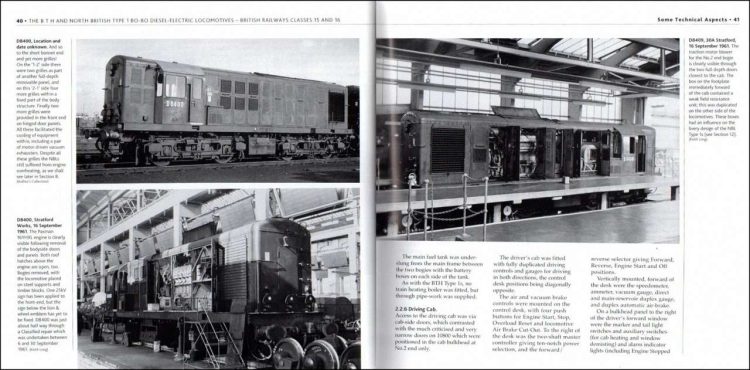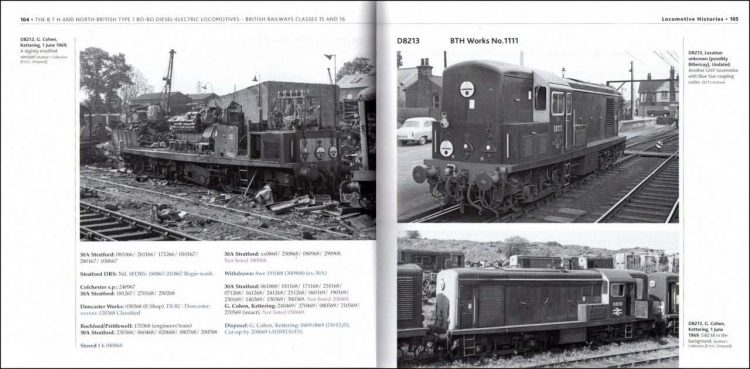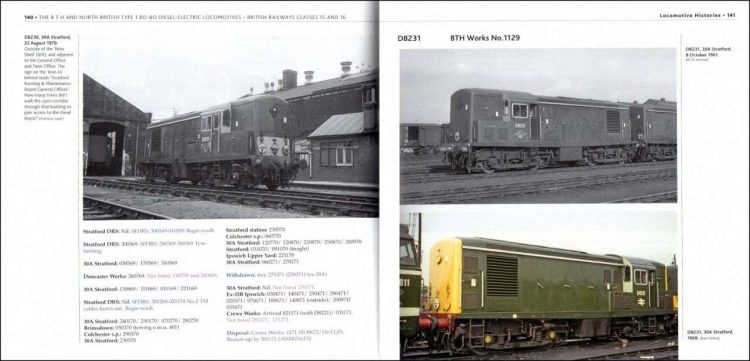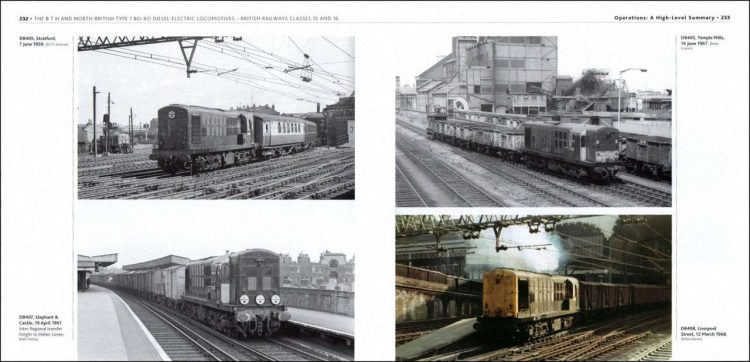Published in November 2021 by Pen & Sword as part of its “Locomotive Portfolios, Diesel & Electric” series and written by Anthony P. Sayer, the landscape format hardback book measures around 24.77 cm x 24.13 cm, has 352 pages, and 150 colour and black and white illustrations & weight diagrams.
It has a published price of £40 at Pen & Sword, and at the time of writing it can be purchased from Amazon for £29.05. The quality of the finished product is superb.
Anthony Sayer is a life-long railway enthusiast with an interest in the history of early British diesel and electric locomotive classes. This is his fifth book in the “Locomotive Portfolio” series, following on from the North British Type 2 (Classes 21 & 29), the Metropolitan-Vickers Type 2 (Class 28), the Clayton Type 1 (Class 17), and BR Swindon Type 1 (Class 14: Their Life on British Railways) books published between 2019 and 2021.
This volume follows the same format as earlier volumes, with 18 chapters providing a huge amount of detail on how the British Thomson-Houston Class 15s and North British Class 16s came to be built, their technical specifications, individual histories of each member of the two classes, and illustrations of each member of the classes at various stages of their short lives. At least one photo of each class member is provided, together with depot allocations and withdrawal dates.
As with previous volumes in this series, the author has clearly carried out extensive research, and his quotes from official archive records such as those involving BR and manufacturers’ representatives dealing with the early loco failures in traffic are particularly interesting.
As well as considering general technical and historical aspects of the classes, there is extensive details about the history of each member of the class. The author has also included a detailed account of the process of the class’s design, procurement, and delivery, and their service lives and demise. Detailed listings for each class member are provided, including their allocation history, liveries, detail differences, and operations.
All of the North British Class 16s were allocated to Stratford depot in the Eastern Region. Here we see the class prototype undergoing attention in Stratford Works.

Around a dozen BTH Class 15s were scrapped at G. Cohen’s scrapyard at Kettering, and on the left we see D8212 well on the way to its final demise, whilst D8213 awaits a similar fate. In earlier years, at the top-right D8213 looks good with its “lion and wheel” BR emblem.

Inevitably, many photographs in the book feature Stratford depot, and the ones below are no exception. The left page below also shows the amount of detail included for each class member. They also highlight a couple of minor niggles with the book that occurred in his volume on the Clayton Type 1s, which is the lack of separators in dates, such as 300369 instead of 30/3/69 for 30th March 1969. The other is the use of various text colours, such as red, blue, violet, and green, with no explanation for their use.

The book contains relatively few photographs of these classes working in traffic. However, in a more-productive time, we see four North British Class 16s earning their living.

In summary, this volume is probably the most comprehensive account of these classes that one could wish for. Although there is a large selection of images, relatively few show them working in traffic. Although expensive, it is excellent value for money and a must-have for anyone who wants to know the history of these early BR diesels. Highly recommended.
The book is available to purchase from Amazon and from Pen & Sword.
RailAdvent would like to thank Pen & Sword for providing RailAdvent with a copy of the book for review.






Responses
Yes, I recall these locos – based at school in Hertfordshire and with grandparents in Wiltshire opportunity to see these classes of early BR Diesels in albeit limited action! Nice to see at the time and sad about their short lives and decline. The book sounds good if not a bit pricy. I may be tempted to buy on Amazon.